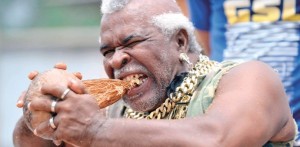 The New Book explores the culture of nicknames in Grenada.
The New Book explores the culture of nicknames in Grenada.
he fascinating culture of nicknames on the Caribbean island of Grenada is explored in a unique book by a Reading author, as Sally Bryant writes for the getreading.co.uk site.
‘They Call Me…’ was launched in this country on Grenada Heritage Day, July 16, and will be launched again on the Isle of Spice on Saturday.
It explores the effects on a wide range of people of answering to a nickname, cruel or kind, for life.
And for author Shirley Anstis, a Reading University graduate and counsellor, it is the result of an emotional journey.
Mrs Anstis, who lives in East Reading, says she was “moved very personally” to write the book – and she carried out the 70 interviews at its core in one “exhausting and intense week”.
The writer explained: “The idea came to me when I was on my counselling course and thinking about identity, how you present yourself to the world.
“I thought it was even more interesting if your name is not your name, but comes with an image – how do you feel about it?”
“Some nicknames, such as Diggit for a gardener, simply reflect a role in the community.
“But others, such as Snakehead, might reflect something you can’t change, like the shape of your head, and living with that unkind label is a very different matter.”
Mrs Anstis grew up in Grenada and the Bahamas, so picking the location for her study wasn’t a problem.
In the book, she also gives an insight into the rich Caribbean culture and history that have influenced the nickname phenomenon.
“Part of it is to do with people moving from Africa, India. There was a mix of cultures and languages, Creole with patois, people were mixing languages and word play was part of it.
“It was also to do with storytelling – after a hard day’s work, instead of being in the pub they were sitting under the stars telling stories.”
Mrs Anstis said an African tradition of real names being secret had also left its mark.
When she stopped people in market squares for her 70 interviews, she took photographs of every one.
In delicate cases where she felt using the picture would be intrusive, it was used as the basis for an illustration by Reading artist Lea Bessaguet.
Researching and writing the book, which has a foreword by Baroness Howells who grew up in Grenada, has taken since the beginning of the year and it has been a labour of love for Mrs Anstis.
“I have been moved very personally to do this – it’s the first and only book on Grenadian nicknames.”



